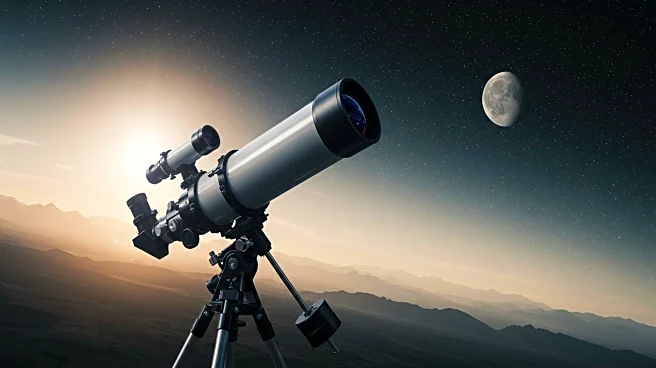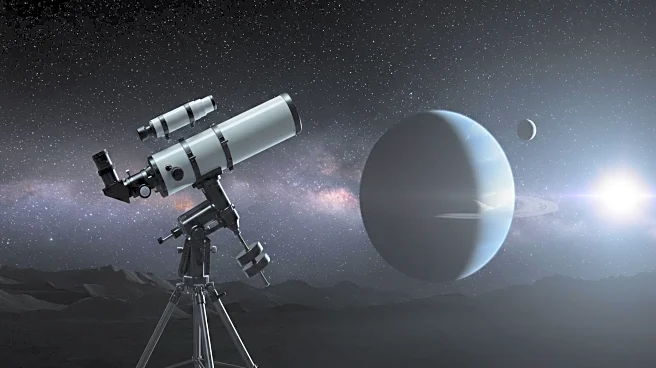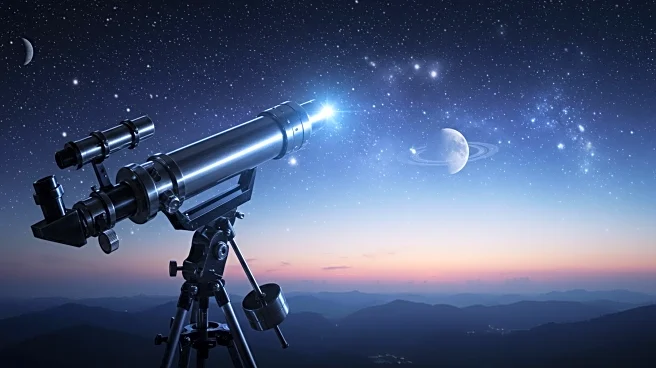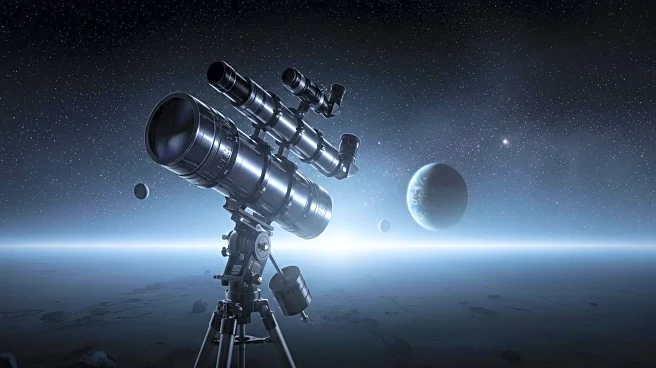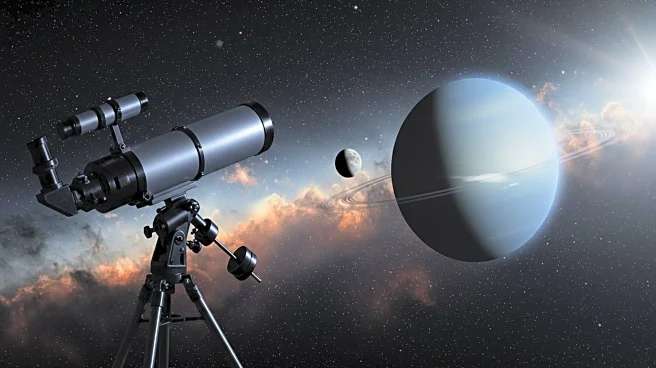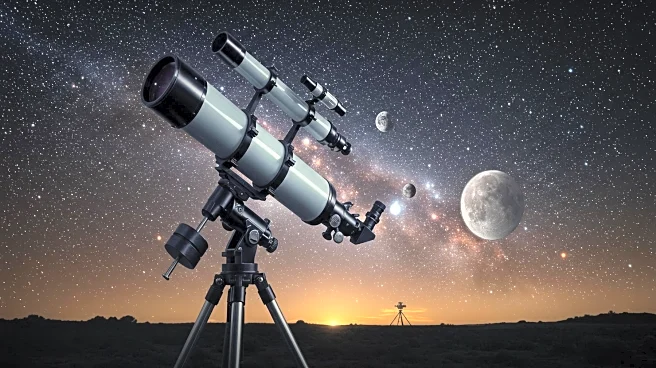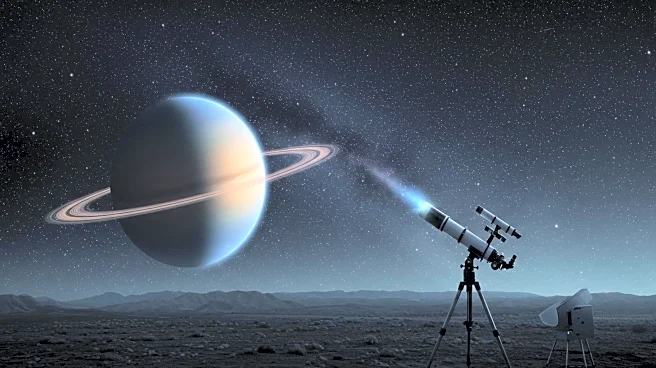What's Happening?
Astronomers have discovered a new moon orbiting Uranus, provisionally designated S/2025 U1, using the James Webb Space Telescope. This moon is estimated to be 10 kilometers in diameter and orbits between the paths of Ophelia and Bianca. The discovery increases Uranus' known moons to 29, highlighting the complex system of small inner moons surrounding the planet. The moon's small size likely rendered it invisible to previous missions, such as Voyager 2. The detection was made during an observation on February 2, 2025, by a team led by the Southwest Research Institute.
Why It's Important?
The discovery underscores the enhanced capabilities of the James Webb Space Telescope in detecting smaller celestial bodies compared to previous missions. This finding adds to the understanding of Uranus' intricate moon system, which includes numerous small inner moons. The dynamic interplay between these moons and Uranus' rings suggests a turbulent past, offering insights into the planet's history and the processes governing moon formation. The discovery may influence future research and exploration of Uranus and similar planetary systems.
What's Next?
Further studies may be conducted to explore the characteristics and interactions of the newly discovered moon with Uranus' rings and other moons. The International Astronomical Union will need to approve an official name for the moon. This discovery may lead to additional research into the complex dynamics of Uranus' satellite system, potentially revealing more about the planet's history and the processes that govern moon formation.
Beyond the Headlines
The discovery of S/2025 U1 highlights the advanced capabilities of the James Webb Space Telescope, which may lead to further discoveries of small celestial bodies. Understanding the dynamics of Uranus' moons and rings could offer insights into similar systems elsewhere in the universe, enhancing our knowledge of planetary systems.
